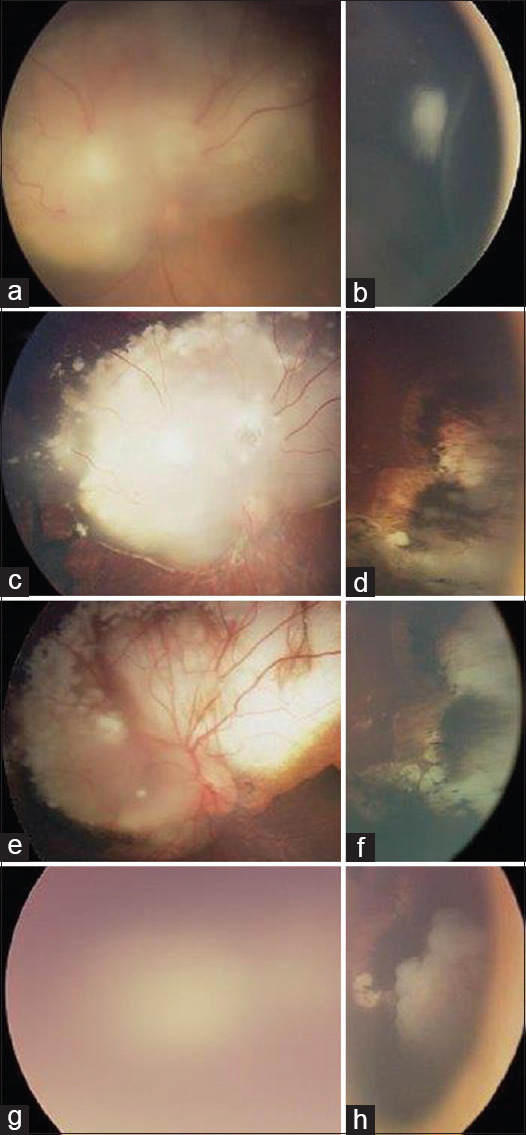Figure 2.

Clinical images of an eye with intraocular retinoblastoma (in a patient who had bilateral retinoblastoma) that showed stage migration during chemotherapy and focal therapy and consequentially failed treatment by EBRT. Fundus examination of the left eye at diagnosis showed 2 retinal tumors (a + b) with no subretinal or vitreous seeds (staged as IIRC group B). After 6 cycles of carboplatin, vincristine, and etoposide chemotherapy combined with transpupillary thermotherapy and cryotherapy, the tumors responded partially by shrinkage, scaring, and calcifications but showed stage migration where new vitreous seeds (features of International Intraocular Retinoblastoma Classification Group D tumor) appeared (c + d) that are features of more advanced tumor than the initial presentation. Since the vitreous seeds were not controlled by additional 2 cycles of carboplatin, vincristine, and etoposide and 3 cycles of subtenon carboplatin injections, salvage EBRT was applied. Initially, the tumor was controlled by EBRT (e + f), but at 6 months postradiation, the main tumor around the optic disc could not be assessed well secondary to cataract (g), and tumor recurrence was seen close to the oral in the inferotemporal quadrant (h). Since cataract surgery was unsafe for the risk of metastasis, and the tumor in the other eye was well controlled with good visual potential, the eye was enucleated. Pathologically, no high-risk features were seen in the enucleated eye
